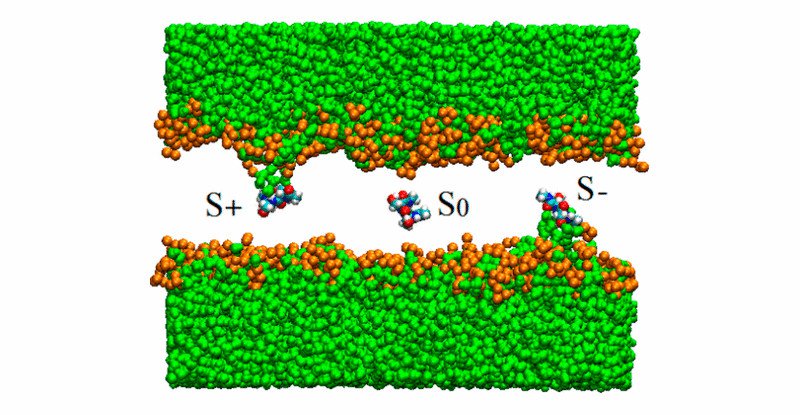
July 18, 2019
Research Highlight
Tools for Modeling Systems Chemistry
Researchers outline case studies for modeling complex systems

Representation of the permeation of dipeptides across a phospholipid membrane. From Wei and Pohorille (2017).Image credit: Wei and Pohorille (2017) J. Phys. Chem. B, 2017, 121 (42), pp 9859–9867.
A team of scientists has presented three case studies from peptide-based systems in order to show how available tools can be used in constructing models for studying systems chemistry; and the usefulness of such approaches in the study of life on Earth.
All life as we know it on Earth operates under certain principles. For instance, living systems use both covalent chemistry (chemistry that employs covalent bonds, where electron pairs are shared between atoms) and physical assembly (the formation of a structure from pre-existing components). Because biological systems involve so many different phenomena, it can be difficult to determine which phenomena are most important. It is also possible that not a single phenomena dominates, and that all phenomena in a system must be studied together as a network rather than as individual pieces.
In the emerging field of ‘systems chemistry,’ scientists attempt to examine systems that are less complicated than biology, but still operate under some of the same principles as life on Earth. Mathematical modeling, while challenging, can be useful in understanding how such systems work. The researchers show how tools available today can help uncover design principles of chemical systems, and explains how certain methods should be included in current chemistry curriculums.
The study, “Systems Analysis for Peptide Systems Chemistry,” was published in the journal Life. The work was performed at the NSF/NASA Center for Chemical Evolution (CCE) at the Georgia Institute of Technology in Atlanta, Georgia. The CCE is a collaborative program supported by the National Science Foundation (NSF) and the NASA Astrobiology Program.